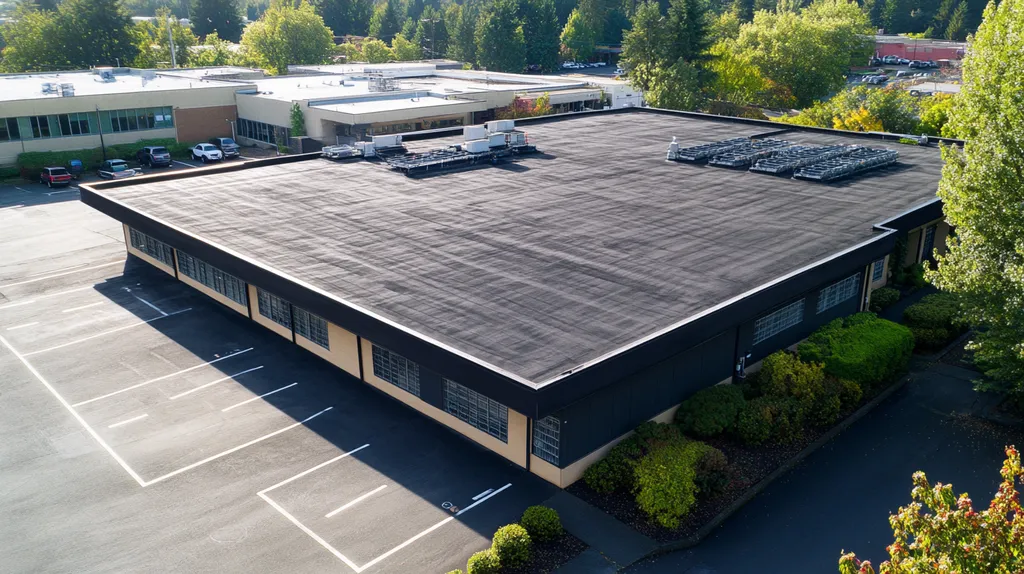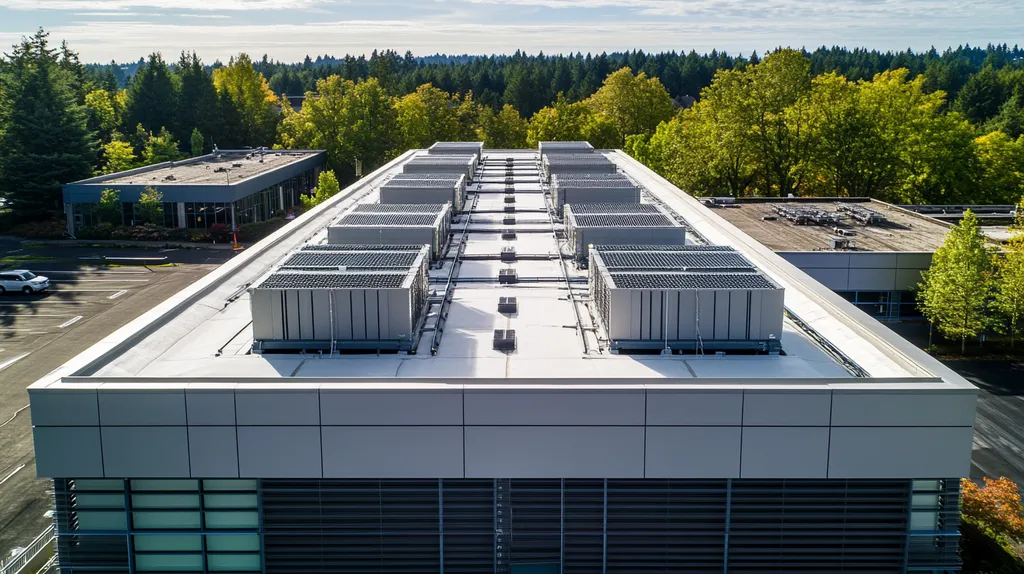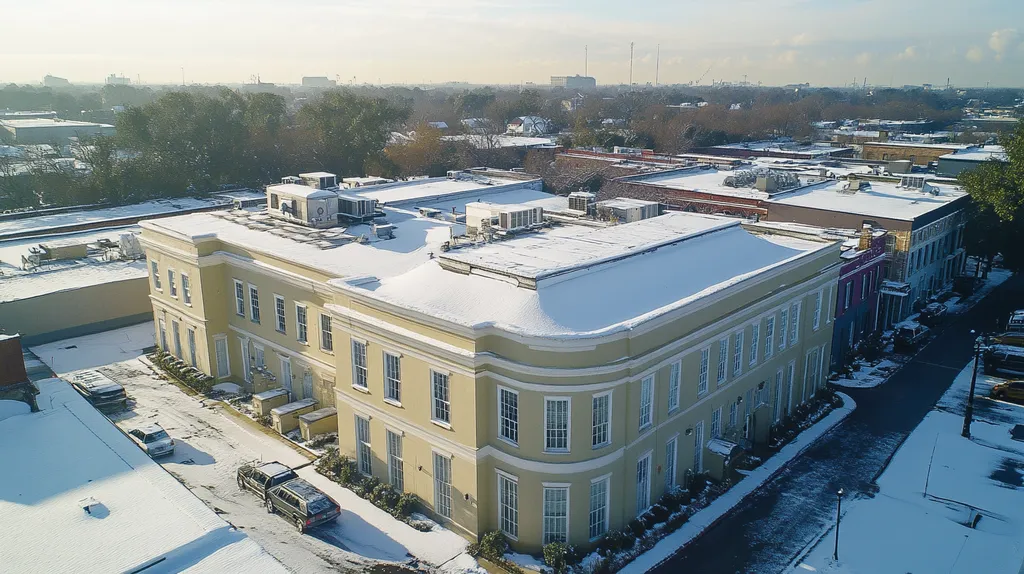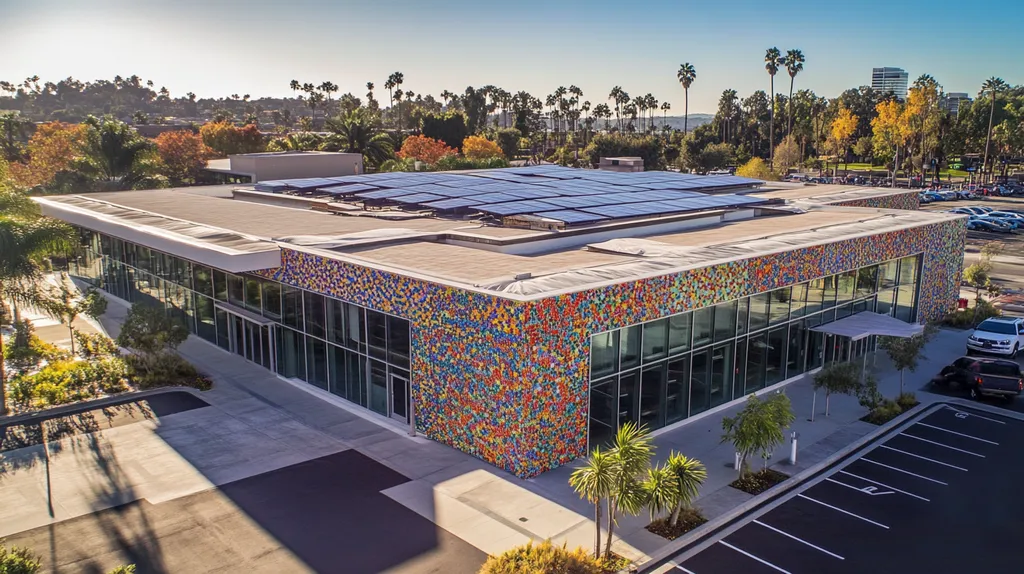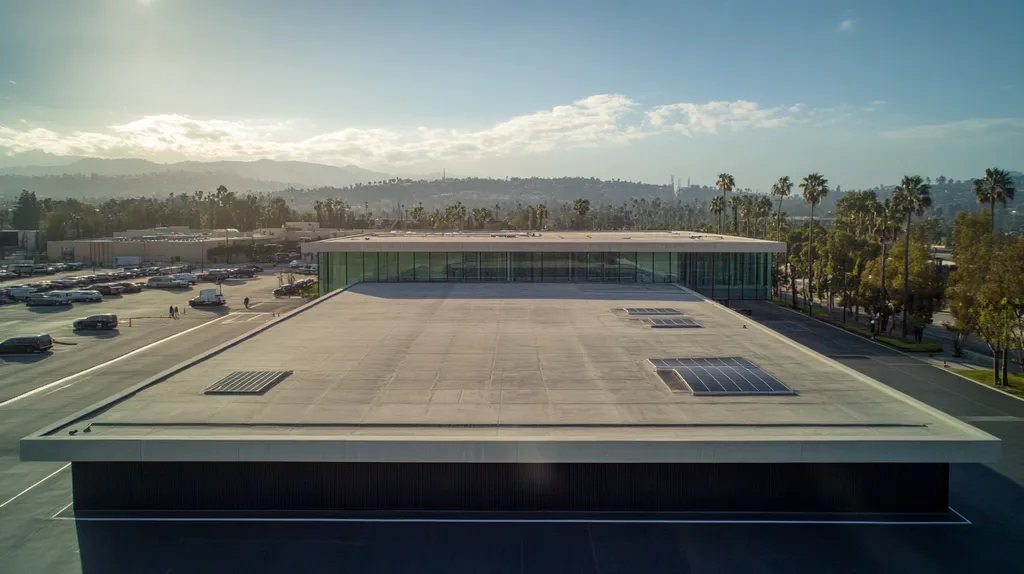Commercial roof coating failures cost property owners millions annually, with studies showing that up to 30% of premature failures stem from inadequate adhesion testing methods.
Current testing practices often rely on outdated protocols that fail to account for real-world conditions, leading to unreliable results and compromised roof integrity.
This analysis examines the systemic flaws in prevailing adhesion testing methods, exploring how inconsistent procedures, misinterpreted data, and limited scope contribute to roofing system failures.
By understanding these critical gaps, property owners and facility managers can better protect their investments through improved testing protocols and maintenance strategies.
SECTION 1: CURRENT PRACTICES
The long-term integrity of a commercial roof relies heavily on the adhesive strength of its coating. Poor adhesion is not just a minor concern; it can contribute to up to 30% of roofing failures, resulting in leaks, structural issues, and expensive repairs. This section will delve into current methods for testing adhesion, the tools utilized in these assessments, and the standard protocols in place. For property owners and facility managers, grasping these concepts is vital to protecting their investment and ensuring the roof’s reliability.
Field Adhesion Testing Methods
Field adhesion testing is critical for understanding how well roof coatings bond to surfaces. One popular method is the pull-off test, where a small sample is pulled from the roof to measure bond strength. While this provides valuable data, it may not represent the wear and tear a roof may face over its lifespan.
Another common approach is the shear test, which assesses a coating’s resistance to lateral forces. While useful in specific situations, this method often misses the vertical stresses that roofs regularly encounter, potentially leading to skewed results.
Both methods focus on localized adhesion, ignoring the bigger picture of varying conditions across a roof’s surface. Testing just one spot may not paint an accurate picture of how well the coating performs overall.
In summary, these traditional testing methods warrant a reevaluation to ensure they can effectively predict a roofing system’s performance amidst different environmental challenges.
Common Tools and Equipment
The effectiveness of adhesion testing hinges on the tools and equipment employed. The pull-off tester is among the most widely used instruments, specifically designed to measure how much force is needed to detach the coating from the roof substrate. However, even these advanced testers can produce inconsistent results due to variations in operator technique and environmental conditions.
Shear testing devices are also prevalent, applying lateral forces to measure resistance until failure occurs. While they provide useful data, their straightforward design can overlook the complexities of real-world bonding scenarios that roofs face.
Additional instruments exist, like bond strength meters, which offer enhanced capabilities but may demand specialized training. This can hinder their adoption among roofing professionals, despite their potential benefits.
Caring for and calibrating these tools is another key concern. Inaccurate calibration can yield unreliable results, complicating decision-making for property managers and owners.
Standard Procedures and Protocols
Standard procedures for adhesion testing are established by industry organizations, but actual adherence varies significantly. Testing conditions are ideally uniform, yet practical factors like temperature and substrate preparation often deviate, impacting the results.
Furthermore, many protocols do not mandate thorough surface assessments before testing, potentially skewing adhesion results. Without this step, the reliability of test outcomes diminishes.
Interpreting results can also be challenging. Standard performance metrics may not directly correlate with long-term success under typical conditions, leading to misinformed decisions regarding maintenance or replacement.
It’s essential to revisit and refine these protocols. As the roofing industry evolves, standardizing procedures to accommodate various roof systems will improve the accuracy of adhesion tests and enhance the longevity of commercial roofs.
SECTION 2: SYSTEMIC ISSUES
The commercial roofing industry grapples with significant challenges in testing roof coating adhesion. The absence of a standardized approach results in inconsistent testing methods, leading to potentially costly decisions. A study by the Roofing Industry Committee on Weather Issues indicates that up to 30% of roof failures stem from inadequate adhesion, underscoring the urgent need for reliable testing protocols. This section will examine the lack of standardization, the misinterpretation of test results, and the consequences of inadequate surface preparation.
Lack of Standardization
The lack of universally accepted standards for testing roof coating adhesion creates significant barriers to obtaining reliable results. Different organizations and manufacturers often use assorted methods, making it challenging to compare data across various projects. For instance, one test might utilize a pull-off method while another relies on a simple tape test, resulting in conflicting conclusions.
This inconsistency complicates decision-making for property owners. Without a common framework, stakeholders cannot fully trust that test outcomes accurately represent adhesion strength. The absence of standardization exponentially increases the risk of premature roof system failure, potentially leading to unnecessary expenses on repairs or replacements.
Furthermore, this lack of uniformity creates confusion in the purchasing process. Property managers may find it difficult to evaluate bids based on varying adhesion data, sometimes resulting in the selection of inferior products due to inadequate information. A clearly defined set of standards could streamline this procurement process, allowing all parties to make more informed choices.
Establishing comprehensive standards for adhesion testing would significantly improve industry practices and enhance product reliability, benefiting everyone from manufacturers to property owners alike.
Misinterpretation of Test Results
The misinterpretation of adhesion test results complicates crucial roofing decisions. Even when proper testing methods are applied, the findings may be misunderstood or inaccurately conveyed. For example, a test might indicate that the adhesion levels are acceptable; however, this does not guarantee long-term performance under the stresses that roofs typically encounter.
This misrepresentation can cause property owners to underestimate the risks associated with poor adhesion. A seemingly satisfactory test result may conceal underlying issues that only manifest after installation, leading to costly failures down the line. Stakeholders need to recognize that adhesion tests represent only a fragment of a more complex picture.
Moreover, many environmental factors influencing adhesion, such as temperature fluctuations, humidity levels, and substrate contaminants, are often overlooked. By neglecting these variables, property managers may make decisions based solely on flawed interpretations of test data.
Enhancing stakeholder education regarding the limitations of test results is vital for advancing adhesion practices. Greater clarity in communication and comprehensive reporting could empower property managers to make better-informed decisions, ultimately leading to more resilient roofing systems.
Inadequate Surface Preparation
Inadequate surface preparation is a frequent yet overlooked cause of adhesion failure that testing alone cannot address. Steps like proper cleaning, priming, and assessing the surface condition are essential to ensure the effectiveness of coatings. However, these fundamental procedures are not always executed thoroughly.
A poorly prepared surface can lead to compromised adhesion, rendering even high-quality coatings ineffective. For example, dust, grease, or moisture on the substrate can inhibit proper bonding, creating vulnerability in the roofing system that is likely to fail prematurely.
The importance of meticulous preparation cannot be overstated. Allocating appropriate time and resources to surface preparation greatly enhances the likelihood of adhesion success and significantly prolongs the lifespan of the roofing system.
Training personnel on best practices for surface preparation can help reduce these risks. By emphasizing the vital link between adhesion quality and surface readiness, all stakeholders—manufacturers, contractors, and property owners—can improve their collaboration and outcomes.
SECTION 3: MISSED OPPORTUNITIES
When it comes to commercial roof coatings, inadequate testing methods for adhesion often translate into significant risks and expenses. For example, improper adhesion can compromise approximately 25% of a roof’s overall lifespan. This section will illuminate critical gaps in current testing practices, revealing missed opportunities that can impact both the durability and safety of commercial roofs.
Ignoring Long-Term Adhesion
Current adhesion tests typically focus on short-term results, neglecting the critical aspect of long-term performance. While initial tests might show good adhesion, they often fail to consider environmental factors like temperature changes and moisture exposure.
Over time, the adhesive bond can weaken, leading to issues such as peeling and delamination. Without a thorough understanding of long-term adhesion, property owners run the risk of investing in coatings that cannot endure their intended lifespan.
Incorporating long-term adhesion assessments into testing protocols would empower stakeholders to make better-informed decisions about product choices. By taking a proactive approach, the roofing industry can enhance durability and reduce potential liabilities associated with roof failures.
Ultimately, it is essential for the industry to shift its focus from measuring immediate adhesion to evaluating how coatings perform over their expected service life. Emphasizing this long-term perspective is vital for maintaining building integrity and minimizing expensive repairs.
Overlooking Cohesive vs. Adhesive Failure
The distinction between cohesive and adhesive failure in testing protocols is often overlooked, leading to misinterpretation of results. Cohesive failure happens when the coating itself deteriorates, while adhesive failure occurs when the bond between the coating and substrate fails.
If the difference is not recognized, property owners may mistakenly attribute poor adhesion solely to the coating itself, ignoring underlying substrate issues that could be remedied. For example, if a coating detaches from a substrate cleanly, it indicates adhesive failure, suggesting additional primer may be needed (source: Polyglass).
Future testing methods must include evaluations that distinguish between these two types of failures. This clarity allows for more accurate troubleshooting and ensures that property owners select products that genuinely meet their roofing needs.
Addressing this crucial oversight will improve product performance standards and aid facilities managers in making informed maintenance decisions, ultimately optimizing roof performance.
Neglecting Comparative Analysis
Current adhesion testing methods frequently lack comparative analysis between various coating types, limiting decision-makers’ ability to choose the best product. Without benchmarking performance against a range of options, property owners risk missing out on superior solutions that better suit their specific roofing needs.
Some coatings may excel under similar environmental conditions, yet traditional testing protocols might fail to highlight these advantages. This oversight leaves property owners at a disadvantage when navigating the purchasing landscape.
Integrating structured comparative analyses into testing procedures would provide a clearer understanding of which coating systems yield the best performance. By adopting this approach, the roofing industry can equip property owners with the information needed for informed choices.
Moving forward, embracing comparative analytical methods will not only enhance the effectiveness of coating selections but also foster a culture of innovation within the roofing sector. This shift will lead to improved outcomes for building durability and long-term performance.
SECTION 4: ROOT CAUSES
The reliability of commercial roof coating adhesion tests is of utmost importance to property owners and facility managers. Poor adhesion can precipitate costly roof failures, resulting in significant damage and unexpected repair expenditures. Many roofing systems have succumbed to inadequate testing methods, which raises serious concerns about their dependability. To ensure the long-term performance of roofs, it is essential to identify the root causes of these testing failures. This section will discuss inconsistent test conditions, unqualified test administrators, and the limited scope of testing.
Inconsistent Test Conditions
Inconsistent test conditions can critically undermine the validity of adhesion results. Variability in temperature, humidity, and surface cleanliness can all significantly affect adhesion outcomes. For instance, testing a coating’s adhesion during cold weather may yield very different results compared to testing during warm, dry conditions.
This inconsistency can create a false sense of confidence in the effectiveness of a roof coating. Tests performed under less-than-ideal conditions may mislead property owners about the actual quality of their roofing systems. It is imperative that proper protocols are established to conduct tests in controlled and repeatable environments.
Additionally, the type of surface material can impact adhesion performance dramatically. Roofs coated on textured surfaces may yield different results than those with smooth finishes. Therefore, standardizing test environments is vital for acquiring accurate data.
By addressing these inconsistencies, the roofing industry can improve predictions regarding the long-term durability of commercial roof coatings, thus securing valuable investments.
Unqualified Test Administrators
The skills and experience of test administrators play a crucial role in the reliability of adhesion testing results. Often, individuals conducting these tests may lack the necessary training to interpret results accurately. This gap in expertise can result in the misapplication of testing methods and unreliable conclusions.
For example, if an administrator misjudges surface preparation requirements before testing, the resulting data will not reflect the true adhesion quality of the coating. Such oversights can lead to premature failures and costly repairs for property owners who rely on flawed data.
Moreover, without proper oversight, variability in testing procedures can occur. The absence of standardized protocols heightens the risk of human error, raising concerns about the integrity of the results. Commercial property owners need assurance that their roof systems are assessed by qualified professionals.
To improve testing outcomes, strengthening administrator training and certification requirements is essential. Ensuring that personnel possess adequate experience can lead to more reliable results and, consequently, better management of roofing systems.
Limited Scope of Testing
The narrow focus of current adhesion tests presents a significant challenge to the roofing industry. Many existing tests evaluate only one type of coating or substrate, overlooking the variety of materials used in commercial roofing. This limited scope can obscure potential adhesion issues that may arise under real-world conditions.
For example, a test that assesses adhesion under a specific condition may not account for varying environmental stresses or interactions with different substrates. This oversight can create a misleading impression of effectiveness, only for coatings to underperform when subjected to actual temperature changes or moisture exposure.
Furthermore, many testing methods neglect to assess long-term adhesion performance. While short-term tests may yield favorable results, they often fail to predict how coatings will hold up over time. Regular evaluations under diverse conditions could provide a clearer picture of a coating’s longevity.
The industry must expand testing protocols to incorporate a wider range of materials and real-world scenarios. By adopting a more comprehensive approach to testing, property owners will be empowered to make informed decisions about their roofing investments.
DATA DRIVEN EVIDENCE
Understanding the data surrounding roof coating performance is crucial for commercial properties. Nearly 30% of roofing failures arise from poor adhesion, which leads to costly leaks and extensive repairs. Property owners and facility managers must recognize current testing methods’ limitations to make informed decisions about their roofing systems.
ASTM Standards and Compliance
The existing ASTM standards for roof coating adhesion primarily assess initial bond strength. While these benchmarks are important, they fail to account for long-term performance under real-world environmental conditions. This oversight can lead to false assurances about a roof’s durability.
For example, ASTM D4541 measures adhesion through tensile bond tests, performed under controlled conditions. However, real-life exposures—such as temperature fluctuations and UV rays—are often overlooked. As a result, roofs that pass initial tests may still face premature failures.
By strictly adhering to these standards, property owners may inadvertently select coatings that do not withstand their specific environments. Reevaluating compliance with ASTM guidelines is essential for improving outcomes.
Enhancing testing protocols to include accelerated weathering tests could provide a better prediction of long-term adhesion performance.
Quantitative vs. Qualitative Testing
Adhesion testing methods generally categorize into quantitative and qualitative assessments. Quantitative tests yield measurable data, but may overlook factors that influence long-term performance. Conversely, qualitative assessments provide insights into material behavior but lack concrete measurements.
This divide presents challenges in evaluating roofing systems. For instance, quantitative tests may indicate high initial adhesion, while qualitative tests might reveal potential weaknesses in material compatibility under stress. Using only one method can overlook critical information that affects roof longevity.
Combining both approaches can offer a more comprehensive perspective of adhesion properties. By leveraging both methods, property owners can make better decisions when choosing reliable roofing coatings.
A balanced approach to testing is vital to ensure roofing decisions withstand the varied environmental stressors encountered over time.
Case Studies and Field Data
Real-world case studies serve as valuable resources for examining coating adhesion testing outcomes. For instance, a large commercial facility experienced severe leaks attributed to a coating that had successfully passed initial adhesion tests. Further investigation found that these tests overlooked key environmental factors.
Field data from similar properties suggested that roofing systems following a modified adhesion testing process performed significantly better. Facilities that implemented more rigorous testing practices often reported a reduction in maintenance issues over longer durations.
Such case studies highlight the risks of solely relying on traditional adhesion testing. They illustrate how diverse testing methods can accurately predict future performance, ultimately leading to savings for property owners in repair costs.
Incorporating these lessons into future adhesion testing protocols can significantly benefit the roofing industry. By focusing on actual performance data, property owners can make better-informed choices to enhance their roofing investments.
SECTION 6: ALTERNATIVE SOLUTIONS
The need for reliable roof coating adhesion tests is critical. Weak coatings can lead to severe water damage and significantly impact a property’s safety and financial health. Studies indicate that as many as 30% of commercial roofs fail due to poor adhesion, underscoring the importance of exploring innovative solutions. This section examines advanced testing techniques, improved surface preparation methods, and integrated maintenance plans to enhance the longevity and performance of roofing systems.
Advanced Adhesion Testing Techniques
Traditional adhesion tests do not account for the various variables that affect a roof’s performance. Advanced techniques like peel and shear testing can provide a more accurate understanding of adhesion, simulating diverse environmental conditions that roofing systems face.
Additionally, non-destructive methods, such as infrared thermography, allow for swift evaluations without causing damage to the roof. This technology helps detect moisture or weak spots that could lead to failure if unaddressed.
Moreover, employing digital scanning and analysis for surface profiles offers deeper insights into the factors influencing coating selection and application. These advanced methods help facility managers ensure that their roofing systems are reliable, ultimately saving considerable costs in maintenance over time.
Improved Surface Preparation Methods
Successful roof coatings depend on adequate surface preparation. Poor cleaning and priming can lead to adhesion failures that compromise the entire roofing system. Techniques such as high-pressure washing and mechanical scarification can ensure surfaces are free from contaminants and ready for coating.
Utilizing specialized primers designed for enhanced bonding also plays a critical role. These primers interact effectively with coatings, increasing overall adhesion performance significantly.
Establishing thorough inspection procedures prior to coating applications is also essential. This includes assessing moisture levels and evaluating the condition of existing materials, guiding the preparation process and ensuring optimal adhesion.
Improved surface preparation not only strengthens adhesion but also extends a roof’s lifespan, resulting in substantial long-term savings for property managers.
Integrated Testing and Maintenance Plans
Maintaining roof integrity and performance requires routine upkeep. Integrated testing plans that include regular adhesion assessments can identify potential issues early, preventing costly repairs down the line.
These plans should incorporate systematic inspections and follow-up testing after significant weather events to promptly address any damage that may have occurred. This proactive approach greatly minimizes long-term risks to the roof structure.
Utilizing software solutions to track maintenance and testing data can significantly aid facility managers. Cloud-based systems streamline communication and document progress over time, ensuring effective management of roofing systems.
Ultimately, integrated testing and maintenance plans foster accountability and contribute to a culture that prioritizes the health and safety of roofs, ensuring their performance over time.
The Bottom Line
The commercial roofing industry faces a critical inflection point, with inadequate adhesion testing methods contributing to over $400 million in annual repair costs.
Current testing protocols fail to account for long-term performance, environmental stressors, and the crucial distinction between cohesive and adhesive failures.
Without standardized procedures and properly trained administrators, property owners risk investing in coating systems that may fail prematurely, leading to extensive damage and costly repairs.
The adoption of advanced testing techniques, improved surface preparation methods, and integrated maintenance plans represents a clear path forward for the industry.
By implementing these solutions, stakeholders can significantly reduce failure rates while extending roof system longevity and protecting their investments.
FREQUENTLY ASKED QUESTIONS
Q. What are current practices for testing commercial roof coating adhesion?
A. Current methods like the pull-off and shear tests are commonly used, but they focus on localized adhesion. These tests may not accurately represent how coatings will perform over time under various environmental conditions. Understanding the limitations of these methods is critical for property owners to ensure the reliability of their roofing systems.
Q. How does the lack of standardization affect testing for industrial roofs?
A. The absence of standard testing methods leads to inconsistent results, complicating comparisons across different projects. Property owners may struggle to trust that test outcomes accurately depict adhesion strength, increasing the risk of premature roof failures. Establishing industry-wide standards could improve product reliability and decision-making for facility managers.
Q. Why is long-term adhesion performance often overlooked in testing commercial roofs?
A. Most adhesion tests are designed to show short-term results and do not account for the effects of environmental factors over time. This approach results in property owners investing in coatings that might not last as expected. Emphasizing long-term performance evaluations in testing protocols is necessary to maintain a roof’s integrity and longevity.
Q. What role does inadequate surface preparation play in industrial roof coating adhesion?
A. Inadequate surface preparation often leads to adhesion failures, as contaminants like dust or moisture can prevent proper bonding. Steps such as cleaning and priming should be carefully executed to enhance adhesion performance. Recognizing the importance of proper preparation is essential for facility managers aiming to prolong the lifespan of their roofing systems.
Q. How do ASTM standards impact commercial roof adhesion testing?
A. ASTM standards primarily focus on initial bond strength, which may not reflect long-term performance under actual conditions. This limitation could lead property owners to select coatings that may not hold up over time. Reevaluating compliance with these standards and incorporating more comprehensive testing can enhance the reliability of roofing decisions.
Q. What alternative solutions exist for improving roof coating adhesion issues?
A. Advanced adhesion testing techniques, improved surface preparation methods, and integrated maintenance plans are effective solutions. Utilizing non-destructive testing and enhanced cleaning protocols can promote better adhesion. Establishing routine assessments helps identify issues early, thereby preserving the integrity of the roofing system over time.
Q. What are the important considerations for choosing coatings for commercial roofs?
A. When selecting coatings, property owners should consider factors such as environmental exposure, compatibility with existing materials, and product longevity. Conducting comparisons between different coatings and consulting with experienced professionals can provide insights on the best options for specific roofing conditions. These considerations are vital for maximizing the performance and lifespan of commercial roofs.

